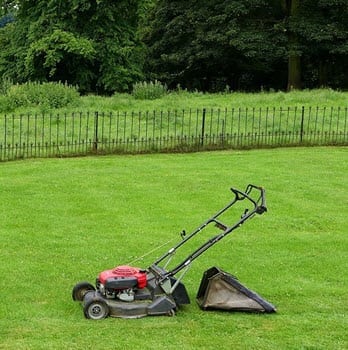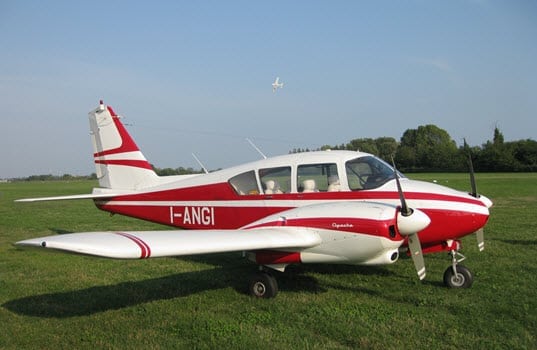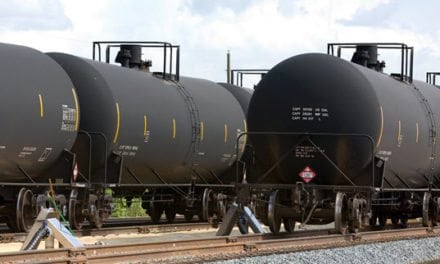By Brian Reynolds
What do Lawnmowers and Airplanes have in common, if the lawnmower is owned by Brian Reynolds, then several things.
I made an observation several years ago, about the time ethanol-blended gasoline pretty much became the only flavor you can buy at local c-stores. Every spring I spent about 3 hours trying to crank up all my garden tools. I also started to notice that after I got my machines running it would still take about a gazillion pulls to get them re-started.
Of course I didn’t winterize my equipment like it says in the owner’s manual and the specific winterizing instructions which are plastered all over the gas tanks. Over the winter the gas that was still in the machines went bad along with what was in my gas can.
My lawn mower is hard to start, my string trimmer is hard to start, my hedger is hard to start, my edger is hard to start, my leaf blower is hard to start and my chainsaw absolutely will not start (great exercise by the way, trying to start a chainsaw that won’t). I put new spark plugs in all machines, drained the fuel and replaced with fresh gas and they still wouldn’t start. Plus the other thing worth mentioning is that I have gone thru at least two string trimmers in the last 5 years because I just flat couldn’t start them. I figured it was probably just as cheap to buy a new one as it would be to take it to the shop.
 So instead of ruining my weekend completely (i.e., saved from having to do any work), I headed off to the airport to have some fun and crank up my 58 Twin Engine Piper Apache and go flying, which by the way hasn’t been started for about 3 months either.
So instead of ruining my weekend completely (i.e., saved from having to do any work), I headed off to the airport to have some fun and crank up my 58 Twin Engine Piper Apache and go flying, which by the way hasn’t been started for about 3 months either.
The first thing that got me to thinking about ethanol/phase separation is that I have an airplane tug that I use to pull the plane out of the hangar. The tug is probably about 30 years old, has a Briggs and Stratton engine on it that is likely the same one you would see on a garden tiller. The only basic difference between my airplane tug and my lawnmower is that, for convenience purposes, I actually put the same gas in it as my Airplane (100 Octane Low Lead Gasoline).
I hook the tug on to the plane and guess what? It cranks up on the first spin after not being used all winter! I also crank up the Apache (left engine first) and it cranks up on about the first spin. I crank on the right engine and guess what? It cranks up on the first spin and both have had the same gas all winter too!
After I had my $200.00 Hamburger (pilot talk for wasting the afternoon flying somewhere for lunch), I decided to take a gallon of Av Gas to the house and see if I can re-create the miracle of getting a small one cylinder motor started on the first spin too.
First I drained all the old gas out of my lawnmower. I also intentionally over primed the motor to flood it thus attempting to flush out any phase that is gumming up the works. After waiting several minutes and still a few good pulls, it coughs, spits, sputters, gags, pukes, smokes, burps and about 30 seconds later it’s running like a champ!
For my next trick, I use my new found magic with the other machines. As most people know who use small 2 stroke garden tools, they are usually hard to start under all circumstances. So I repeated the same process with the string trimmer as I did with the lawnmower and amazingly it starts right up as well!
I’m thinking that I am on to something here! As of March 22, 2018, at the Arlington Texas Municipal Airport Self Service pump for 100 Octane Low Lead Gas the cost is $4.19 per gallon. (Believe it or not they have unattended cardlock’s for aircraft fueling at most regional airports in the US. I haven’t actually researched if self-serve airplane gas is available in New Jersey and Oregon.) I figure I use less than 10 gallons all year for my tools so that is an investment of $41.90 for gas for the entire year (20 bucks more for gas for the year. Whoop-dee-do!). A new weed eater cost around $200.00 during the Memorial Day Sale anywhere you go.
For the last 3 years all my garden tools run on AV GAS. I don’t winterize, whatever is in their little tanks in December stays there until March the next year. I don’t run down and refill my 10 gallon gas can just because it’s spring. There is still about 2 gallons in it from last year and I will bet anybody $100.00 my lawnmower will pull by the third pull. ( I know I’ve been saying first pull throughout this story, but if we’re betting money, I’m going to cut myself a little slack!)
So what is phase? Phase occurs when a sufficient amount of water invades a fuel tank whereby the ethanol separates from the gasoline and attaches itself to the molecules in the water creating essentially a multiple layer of various stages between water and gasoline. The process of phase separation can happen in any size tank and has roughly the same viscosity of brake fluid.
Going back to the question in the beginning of this story, what does my airplane have in common with my lawnmower? ANSWER: They both run on Avgas, they start quickly and I don’t worry about phase. You can still get water in the tank. But guess what? Water and Gasoline don’t mix and in the case of my airplane, I always sump the tank and inspect for water before every flight.
Gasoline and ethanol apparently do mix, but can become separated and turn to phase and you can’t just shake it real good to get to go back to the way it was before. If you don’t have access to Avgas, try racing gas from sources such as VP Fuels. Racing gas doesn’t usually have ethanol and is also readily available. Also some retailers such as Lowes, Sears and Home Depot have started selling prepackaged gasoline without ethanol in small, 32 ounce quantities.
High octane does not damage a low compression engine. It’s the other way around. Low octane gas will potentially damage a high compression engine. FYI a lawnmower is definitely a low compression engine.
My chainsaw still won’t start, but that’s just because it’s a chainsaw. Besides that who wants to ruin the weekend running a chainsaw all day?
 Brian Reynolds began his career working as a teenager in his family owned jobbership in Cisco, Texas and has been on the forefront of many significant industry milestones. Brian was an early adopter of cardLock systems in the 1980s, a pioneer of high volume supermarket fueling centers in the 1990s and one of the key architects behind reward-based fueling loyalty in the 2000s. He currently works for Dover Fueling Solutions in ClearView, wet stock management sales.
Brian Reynolds began his career working as a teenager in his family owned jobbership in Cisco, Texas and has been on the forefront of many significant industry milestones. Brian was an early adopter of cardLock systems in the 1980s, a pioneer of high volume supermarket fueling centers in the 1990s and one of the key architects behind reward-based fueling loyalty in the 2000s. He currently works for Dover Fueling Solutions in ClearView, wet stock management sales.








